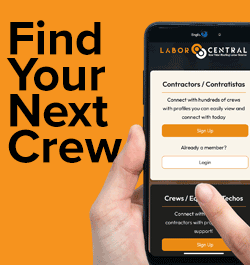Embracing bilingual training

RCS Influencer John Kenney says embracing bilingual training positions a business as a forward-thinking, inclusive employer in the competitive construction market.
In the construction industry, particularly in roofing, the workforce is increasingly diverse, with many bilingual or Spanish-speaking employees. Offering bilingual training ensures safety and compliance and enhances team cohesion and productivity. Here's what roofing contractors can do to implement effective bilingual training programs.
Recognize the need for bilingual training
The first step in implementing bilingual training is recognizing its importance. In areas with many Spanish-speaking workers, it's not just a courtesy but a necessity. Bilingual training addresses potential language barriers that could lead to misunderstandings and accidents on the job. Ensuring all team members fully understand training materials and safety protocols is essential for maintaining a safe working environment.
Develop bilingual resources
Contractors should invest in creating or sourcing training materials in both English and Spanish. This could include safety manuals, instructional videos and onboarding documents. These materials must be direct translations and adapted to ensure cultural relevance and clarity. Consider working with professional translators who are experienced in construction terminology to ensure accuracy and effectiveness.
Hire bilingual trainers
One effective way to implement bilingual training is to hire fluent trainers in English and Spanish. These individuals can bridge the communication gap and tailor their training methods to accommodate all workers. Bilingual trainers can also switch between languages as needed to clarify complex concepts, ensuring that all workers fully understand the training content.
Use technology to enhance learning
Leveraging technology can make bilingual training more accessible and effective. There are numerous educational platforms and apps designed to facilitate multilingual training. These tools often include features like subtitles, language-switching options and interactive content, which can help engage workers and reinforce learning. Virtual reality (VR) simulations are also an excellent way to provide immersive, hands-on training experiences in multiple languages.
Foster an inclusive culture
Beyond formal training, fostering a workplace culture that values diversity and inclusivity can significantly benefit bilingual employees. Encourage communication and teamwork across language divides by promoting language learning among all employees and recognizing the skills bilingual workers bring to the team. Such efforts can improve morale and reduce turnover.
Regularly update and improve training programs
The effectiveness of any training program hinges on its relevance and timeliness. Regularly review and update your bilingual training programs to adapt to changes in safety regulations, technology and workforce demographics. Solicit feedback from employees about the clarity and usefulness of the training they receive and make adjustments as necessary.
Suggestions to get started:
- Assessment of needs: Conduct a thorough assessment of your workforce to determine your employees' specific training needs and preferred languages. This will help tailor your training programs effectively.
- Engagement with community and experts: Engage with local communities and linguistic experts to ensure your training programs are culturally and linguistically appropriate. This engagement can also provide insights into better ways to communicate and educate your workforce.
- Certification and compliance: Ensure that your bilingual training programs meet all local and federal regulations for safety and training. Consider obtaining certifications that could enhance the credibility of your training programs and your business.
- Ongoing evaluation: Implement a system for ongoing evaluation of your training effectiveness. Use tools like surveys, interviews and direct observations to gather feedback and measure understanding among your workforce.
By implementing these strategies, roofing contractors can effectively train a bilingual workforce, ensuring safety, compliance and efficiency on the job. Embracing bilingual training not only meets the immediate needs of the business but also positions it as a forward-thinking, inclusive employer in the competitive construction market.
John Kenney is the CEO of Cotney Consulting Group. See his full bio here.






















Comments
Leave a Reply
Have an account? Login to leave a comment!
Sign In